Tested: KTM’s 2020 Enduro Range
Twelve months ago, when KTM unveiled its 2019 motocrossers – new-gen bikes that came with a reworked rolling chassis, sweeping upgrades to engines, all-new bodywork and seat, and weight savings – it created a widespread expectation that their enduro cousins would adopt a majority of those upgrades for 2020. And last week’s international media launch for KTM’s 2020 EXC range in Spain confirmed that that thinking was pretty much on-the-money.
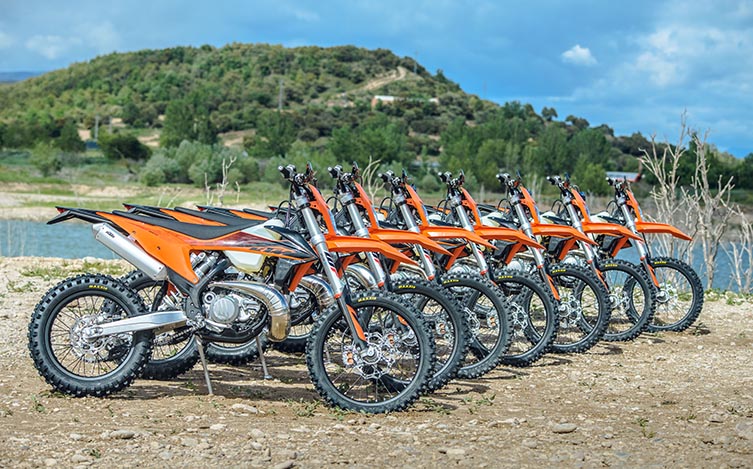
But how has KTM ‘enduro-ised’ the 2019 MX-bike mods for its 2020 EXC models? And do these upgrades materially alter the new EXCs’ performance and overall character? We’ll go into more detail in the coming weeks – and again when we get to ride the bikes again on Aussie soil later in the year – but to help put these much-evolved 2020 bikes in context for now, here’s a top-line insight into what our first ride impression in Spain revealed.
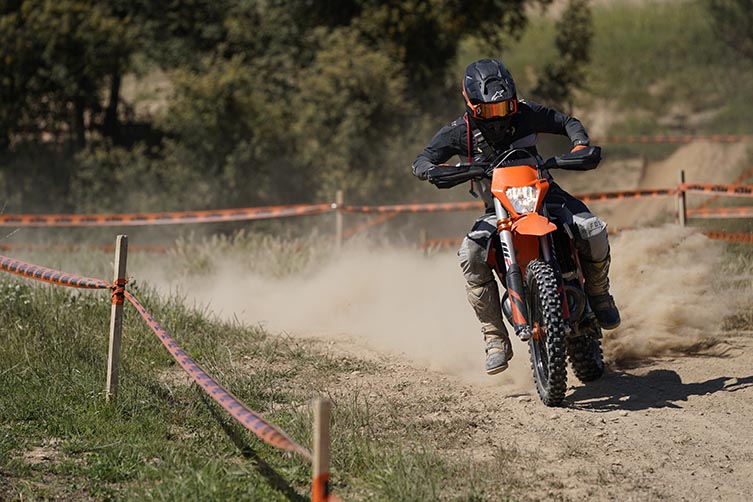
HOW WOULD YOU PUT THESE 2020 EXC MODELS IN CONTEXT?
Well, let’s reflect for a bit. KTM’s last all-new platform – or ‘new-generation’ – enduro machines were the 2017 models. All seven bikes in that 2017 range got completely new frames, suspension, engines and bodywork, along with big weight savings and mass centralisation (mainly via relocating the engines’ crank and clutch shafts). Since then, KTM’s engineers introduced fuel injection to their 2018 250cc and 300cc two-strokes, and refined all models’ mapping (especially on the two-strokes) on an almost constant basis. But beyond that, the enduro-model mods since 2017 have amounted to little more than tweaks to suspension settings and graphics.
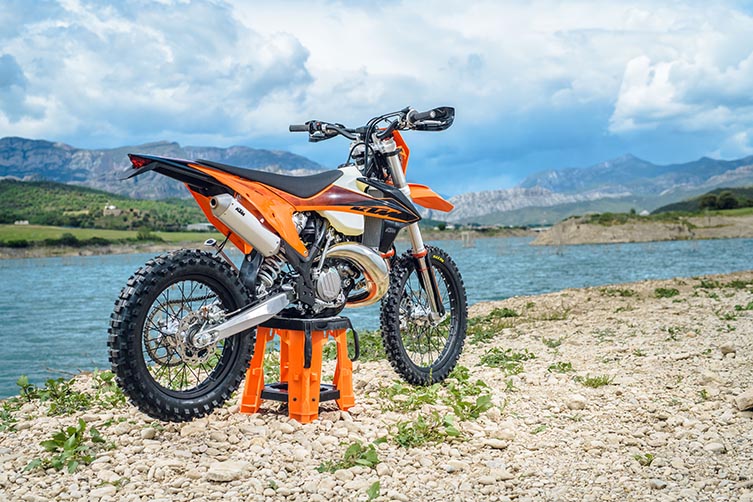
For 2020, KTM has stuck with the same seven-model line-up – the 150, 250 and 300cc two-strokes, and the 250, 350, 450 and 500 four-strokes – with the only difference being that the 150XC-W has now adopted fuel injection (and in doing so, is renamed the “150EXC TPI” – a bike now homologated for Euro4, which we revealed earlier this year. According to KTM Austria’s PR, the design team’s targets for these 2020 models was “improved handling and reliability, better overall performance, and a new appearance”. But it’s also clear the 2020 bikes are designed to be more capable in extreme terrain. And with two-stroke models now accounting for 50% of KTM’s bike sales (that’s before you count the Mini models), they make no secret of the fact that a large part of the development focus has been on refining the two-stroke models’ TPI fuel injection system.
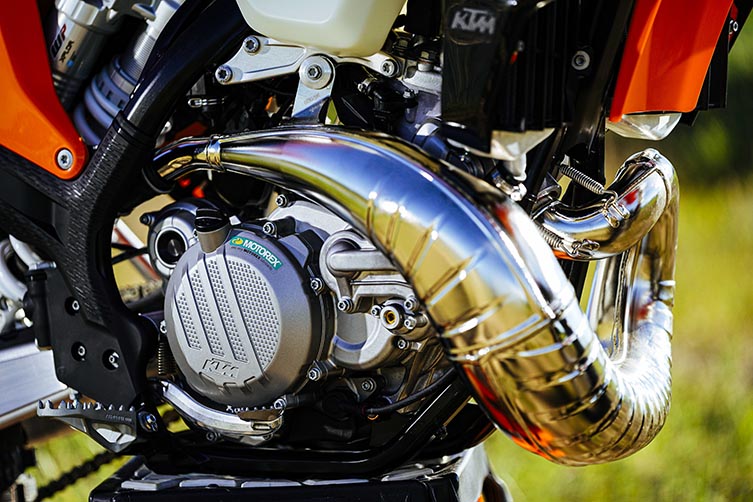
SO ARE THE 2020 ENDURO MODELS REFINED OR REINVENTED?
They’re not new-generation machines, like we saw in 2017 – in the sense that there haven’t been major overhauls to engine configurations or frame architecture. But the 2020 bikes are much more than refined versions of their predecessors. The mods to the 2020 models’ frame, engine, suspension, bodywork and seat all add up to a very significant evolution of the species. In fact, about 60% of the components on the 2020 bikes are new. And when you factor in the weight savings that KTM has found across both two- and four-stroke models, it’s fair to say that from an overall performance point of view, they’ve evolved drastically for 2020.
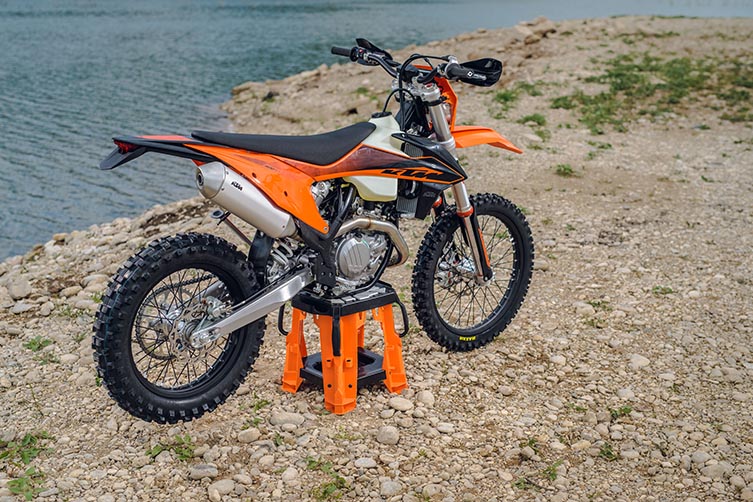
WHAT’S THE CENTRAL DESIGN PHILOSOPHY BEHIND KTM’S 2020 EXC RANGE?
In recent years, mass centralisation (and the handling benefits it generates) has been front-of-mind for KTM’s design team. And that obsession led to radical changes in the positioning of the 2017 bikes’ heaviest rotating masses: the engines’ crank and clutch shafts. For 2020, mass centralisation is still on the radar, but it has been achieved via lowering the radiators and completely redesigned exhaust systems this time around. In addition, the rider ‘interface’ with the bike, and overall performance and rideability (especially in extreme terrain) have all become the design team’s primary areas of focus. Interestingly, weight savings are not an explicit design target for the first time in many years. Sure, there have been some weight reductions for 2020 (for instance, the 450 and 500EXC-F engines’ top-ends shed 500g apiece, and the cases on the 250/350EXC-F are 300g lighter), but because KTM knew they already set the lightweight benchmark for most, if not all, models in the range – and in some cases, by some considerable margin – their focus shifted to refining the bikes’ ready-to-race enduro pedigree, without compromising rideability for average riders.
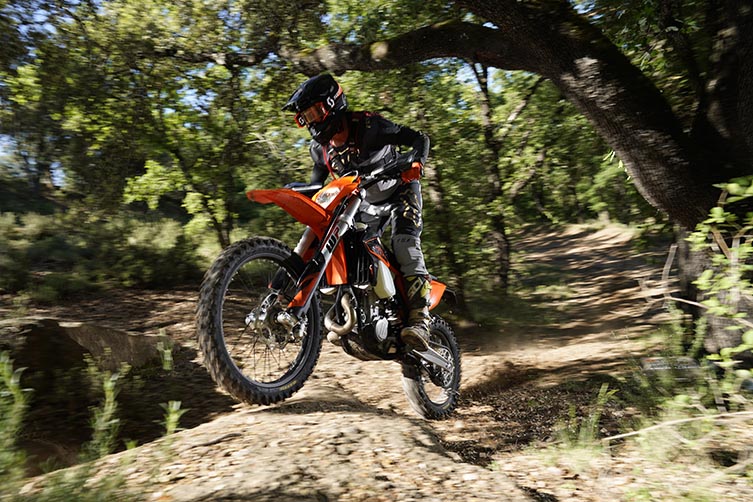
WHAT ARE THE THREE STANDOUT CHANGES TO THESE 2020 MODELS?
Frames, suspension and bodywork. That’s not to say that the engine mods all models receive for 2020 are insignificant (in fact, there are sweeping changes to exhaust systems, thermodynamics and mapping across all models, and big changes to the four-strokes’ cylinder heads). We’re just saying that, from a performance impact point of view, the engine upgrades are overshadowed by the changes made to the frame, suspension and rider interface. So let’s look at each of those three areas separately…
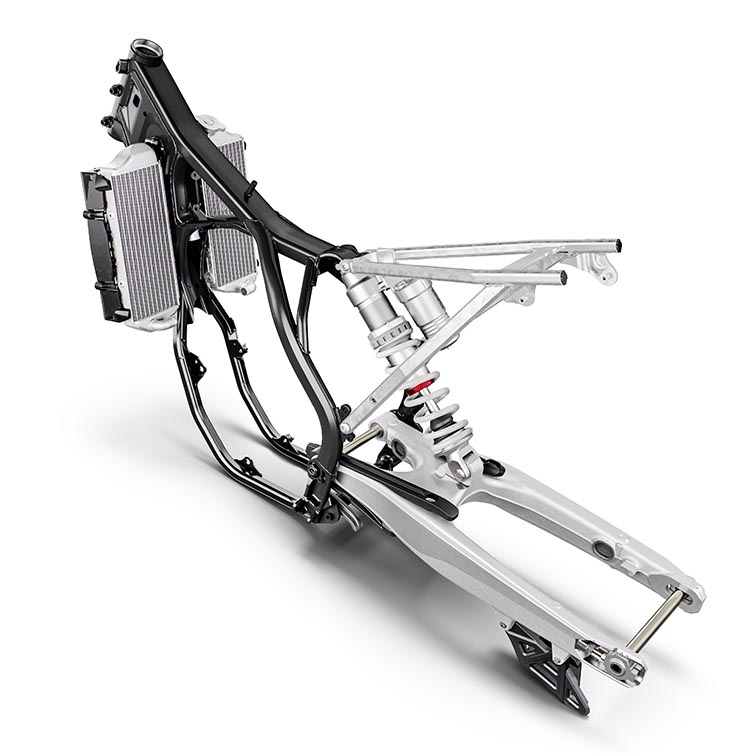
THE FRAME: At first glance, the 2020 frame doesn’t appear much different to its predecessor, but it is (aside from the fact it’s changed from orange to black, that is). It retains the same geometry, but 50% of the tubing making up the frame and subframe is new or significantly revised; changes designed to give the frame a little more longitudinal and torsional stiffness. And that’s interesting because this is the first time since 2012 that KTM has not made their EXC frames more flexible in the longitudinal plane (remember the 2017 models’ frames, which were designed to have a whopping 30% more longitudinal flexibility that their predecessors?!). Combined with the mods to the suspension settings (mainly the Xplor fork) and the more flexible alloy engine mounts, this added rigidity in the 2020 frame is designed to create better front-end feel and steering accuracy, and more straight-line stability.
THE SUSPENSION: Interestingly for 2020, WP’s 48mm Xplor fork on all seven models is fitted with softer springs (in the 450 and 500’s case, the fork springs are two rates softer!), but this is coupled with firmer compression damping settings. These changes have come in response to criticisms that the EXC range’s Xplor fork tends to dive too much and upset the chassis’ balance. So instead of relying on the spring to hold the fork up in its stroke, the idea is that the beefed-up compression damping ‘picks up’ and controls the fork’s compression earlier in the stroke; thereby resisting dive, bottoming and front-to-rear hobby-horsing. On the rear, the PDS shock absorbers’ spring rates remain unchanged on all models, but there are mods to its internals (it gets some pretty significant updates to its second piston and the cup it enters to control the last part of the stroke and improve bottoming resistance).
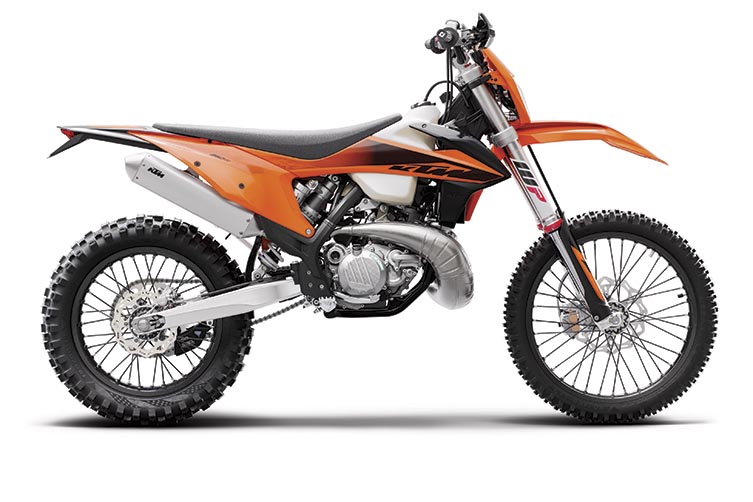
THE BODYWORK: When we first tested the 2019 MX range a year ago, we said that the overhaul to the bikes’ ergonomics – to the bodywork’s shape and its contact points with rider, and the all-new seat – created the most noticeable change to the bikes’ feel in the saddle. And the same can be said of the 2020 enduro models. Although the seat ‘line’ remains the same for 2020, added padding makes it more comfortable. The 12mm lower radiator shrouds create noticeably more room around the tank and steering head for your legs when railing deep ruts. And the slimmer sideplates (thanks largely to the new exhaust system that comes with a more bevel-shaped muffler shape) makes it easier to get your bodyweight back over the rear guard for heavy braking or steep downhills and drop-offs. In addition to that, the new textured frame guards make the entire bike easier to grab and control with your boots.
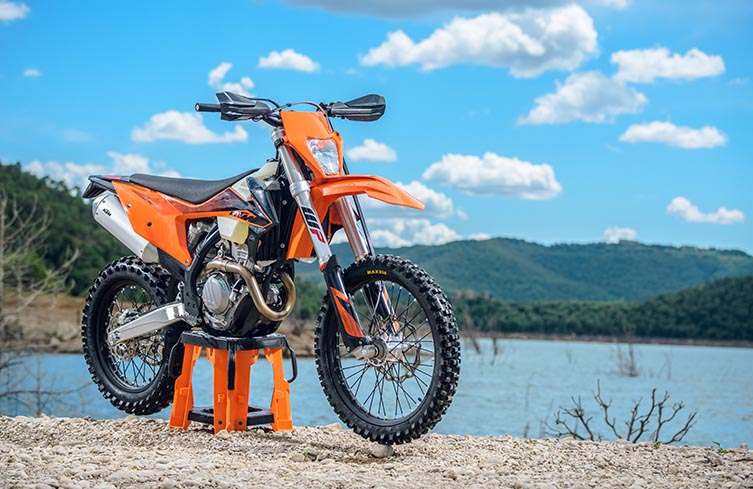
WHAT IMPACT DOES THE COMBINED FRAME & SUSPENSION CHANGES HAVE ON THE 2020 BIKES’ RIDE?
The 2020 machines don’t necessarily steer sharper, but they do feel more confidence inspiring through turns – particularly on corner entry, where the WP Xplor fork’s bolstered damping is more resistant to diving and sits up better in its stroke. With less transfer of weight onto the front-end under brakes, and less hobbyhorsing through a series of bumps, the 2020 chassis has a more stable, composed and predictable feel than its predecessors. Thanks to the damping taking effect earlier in the fork’s compression stroke, it does create a taller, firmer feel when you first jump on the bikes and poke around at low speed (something you notice on the lighter two-strokes, in particular). But as soon as you up the speed and push the things into obstacles, the new fork settings give the front-end a very sure-footed feel over small bumps, while the added progression in the compression damping stops it gaining too much momentum through the stroke and bottoming prematurely. Similarly, the updated WP PDS shock offers noticeably more bottoming resistance when asked the question on big hits, and yet it remains just as plush in the first part of the stroke, where that suppleness is required for tractability.
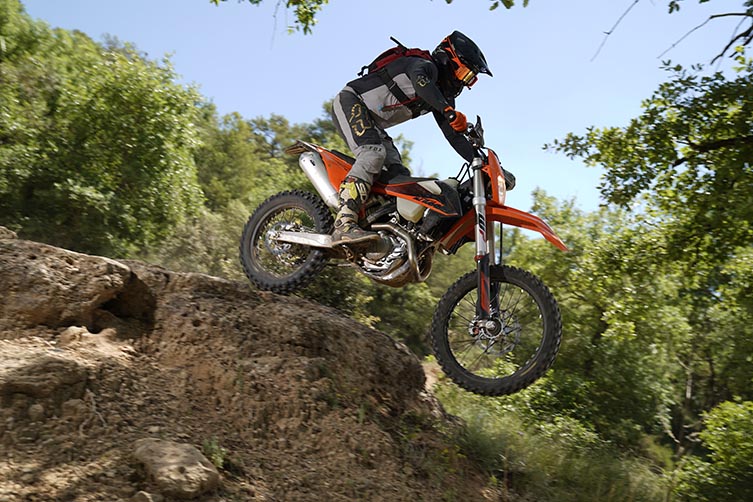
HOW DO THE FOUR-STROKES RIDE?
The 2020 250EXC-F and 350EXC-F may have a new exhaust and transmission, and revised EMS, throttle body and electrics, but they don’t feel a lot different to their predecessors in the power department. Probably the most noticeable thing on both models is their extra torque, though with several of the launch bikes running an FMF or Akrapovic muffler, it was difficult to get a true sense of how much the 2020 bikes have come forward. That said – and just as we discovered with the new 2019 MX models a year ago – the smaller-capacity EXC-Fs do seem to respond better to the addition of an aftermarket muffler than their predecessors did, and their aggressive map option (Map #2) seems to give them an added shot in the arm. Plus, with more efficient cooling systems for 2020, the high-revving 250 and 350EXC-F will be less susceptible to performance fade when engine temps climb.
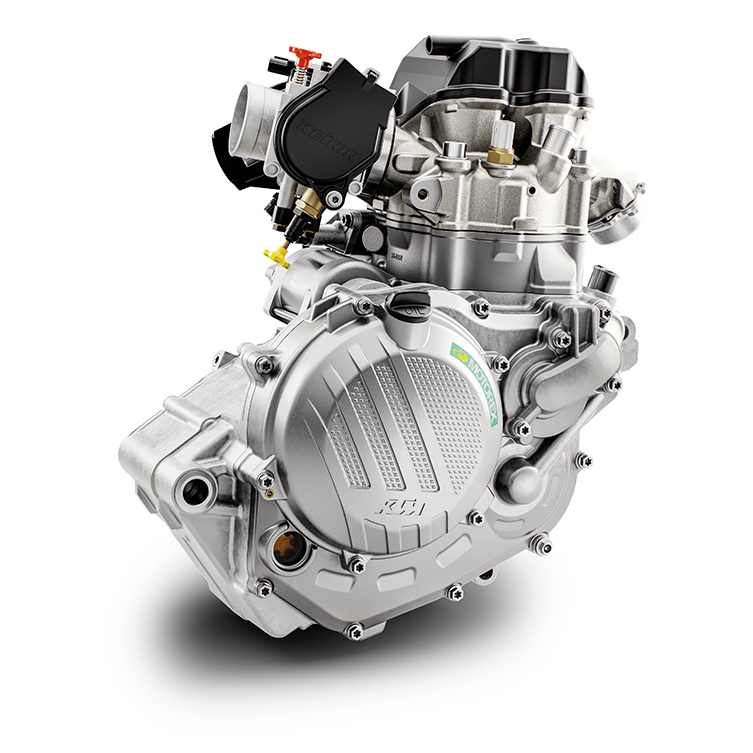
Again, just like their motocross cousins, the performance gains are more apparent on the bigger capacity models: the 2020 450EXC-F and 500EXC-F. In addition to the mods to airbox, exhaust and mapping, the headlining change for the 450’s SOHC engine is the completely redesigned cylinder head (which is 15mm shorter than its predecessor and 500g lighter!). And collectively, the mods have given these prodigiously torquey engines broader power and better throttle response for 2020, especially at lower revs. While both models deliver a super-linear surge of rider-friendly power, the 450 is the livelier of the two and will lift the front wheel easily under its own power in third and fourth gears. The 500, while not at all short on power or low-rev chugability, has a lazier style of power that builds more incrementally – a character trait exaggerated by its taller final gearing (13/50, versus the 450’s 13/52). The aggressive mapping (Map 2) on both 450 and 500 offers noticeably more throttle response at lower RPMs, while the Traction Control (the Map Selector Switch is not standard on these KTMs, but was fitted to all bikes at the launch) remains a great ‘safety net’ addition to both Map 1 and 2.
And when you combine the 450/500’s user-friendly power delivery with the weight savings and mass centralisation they also get, the 2020 450/500EXC-F also seem to have taken the biggest steps forward when it comes to agility. And that pays big dividends in the bush where – unlike a motocross track – you seldom have the luxury of being able to draw premeditated lines.
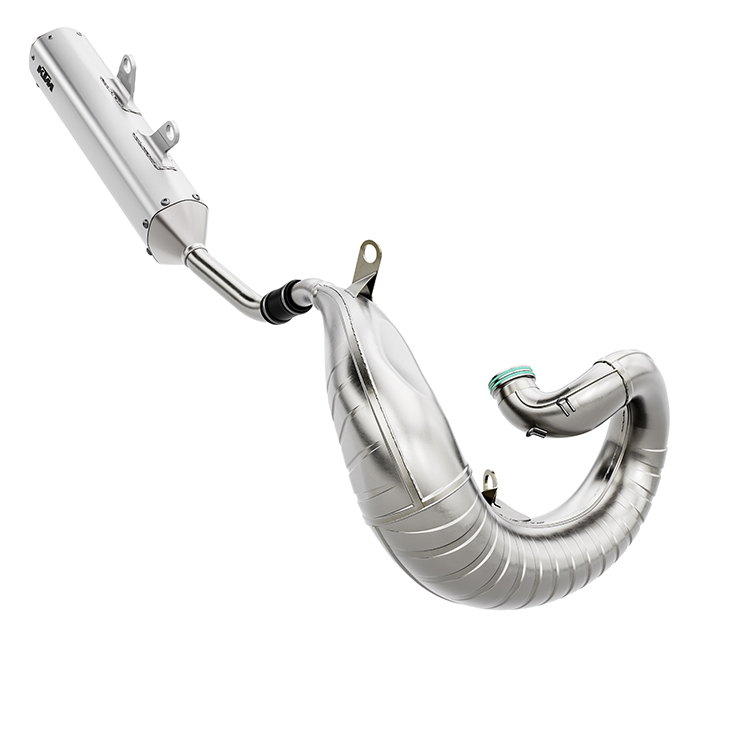
HAVE THE TWO-STROKES ALSO IMPROVED NOTICEABLY?
Absolutely. After two years of experience with TPI technology, KTM has been able to artfully adapt the fuel injection system to the all-new 150EXC TPI. It’s still a small-bore two-stroke (meaning you need to consciously click down a gear or two before tipping it into a turn), but it’s got more torque than you’d think possible from a 150cc two-dinger, and a very broad and punchy mid-range. It does sign-off pretty quickly up top, so it feels more suited to the bush than fast grasstrack. Meanwhile, the new DS (Diaphragm Steel) clutch retains that super-direct feel of the conventional six-spring clutch, and by saving more than 300g, it helps gives this little 150 good throttle response.
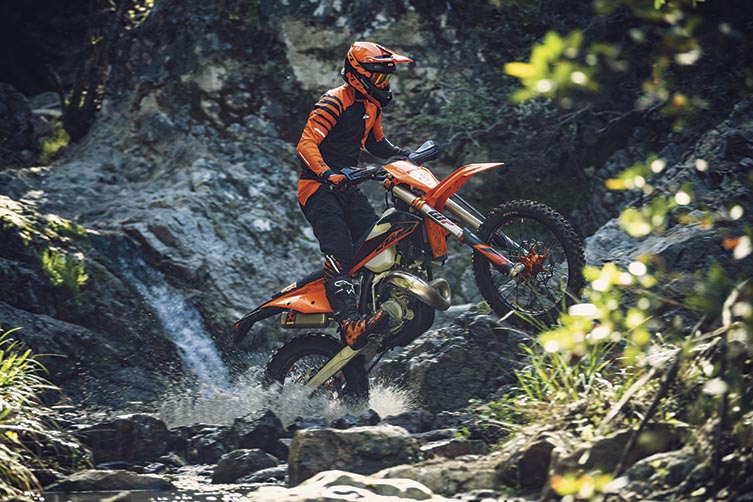
The 250 and 300EXC TPI models have been a hugely successful sales story for KTM for the past two years, with the 300EXC TPI being the brand’s biggest-selling model in both European and Australian markets (in spite of the fact that there have been a few bugs with the TPI technology’s mapping and EMS that KTM have been busily ironing out). All indications at the 2020 bikes’ launch is that both the 250 and 300EXC TPI are much more refined versions of their predecessors, with crisper fuelling across the rev range, and noticeably better power and throttle response. According to the designers, much of those advances were generated by the new oval cross-section expansion chamber. In addition to the power benefits, the pipe’s radical-looking ribbed sections add strength and reduce noise, while its tucked-in, compact design gives the bikes more ground clearance in ruts. These two models also benefit from their engines being tilted forward in the frame for 2020, which puts additional weight on the front wheel for a more planted feel in turns.
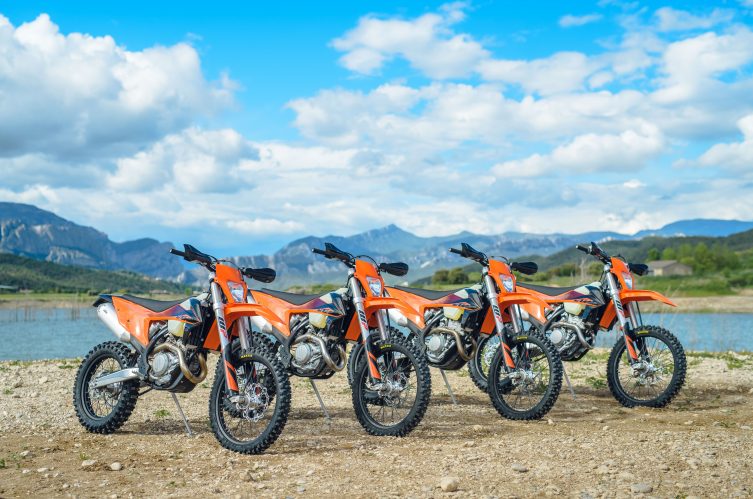
WHEN ARE THE 2020 BIKES DUE IN OZ, AND WHAT WILL THEY COST?
According to KTM Australia’s National Brand Manager, Tam Paul, the 2020 EXC models are expected to start arriving in Australian dealers at the end of August. Paul couldn’t be drawn to comment about prices for these 2020 EXC machines, but with the Aussie Dollar’s exchange rate against the Euro coming under pressure over the past six months (and with no significant change to RRPs between 2017 and 2019), we wouldn’t be surprised to see some small price increases across the board for KTM’s 2020 enduro range. It’s also worth noting that the 2020 bikes Australia will get are EU-spec (rather than the AU-spec units we used to get), meaning the hard plastic bashplate will no longer be standard on the four-stroke models (bashplates have not been standard on the two-stroke EXC models since 2017).
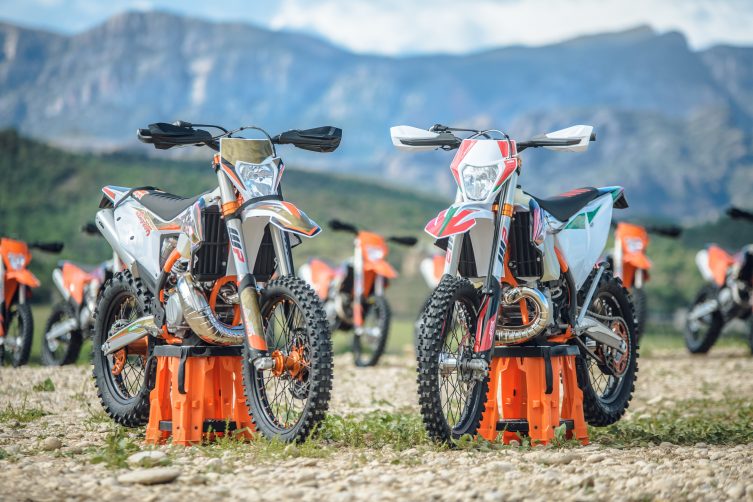
WHERE CAN I FIND MORE DETAIL ABOUT KTM’s 2020 EXC MODELS?
For detailed information about the mods made to KTM’s 2020 enduro models (including the up-specced Six Days models and the all-new, limited edition 300EXC Erzberg TPI machine, go to www.ktm.com.au. And stay tuned to Transmoto’s website over the coming weeks, where we’ll offer more detailed insights into the 2020 bikes’ performance, showcase some video from the launch in Spain, and bring you interviews with the key guys on KTM’s design team from the Austrian factory.
Related Content

2020 KTM ENDURO BIKES – FIRST LOOK
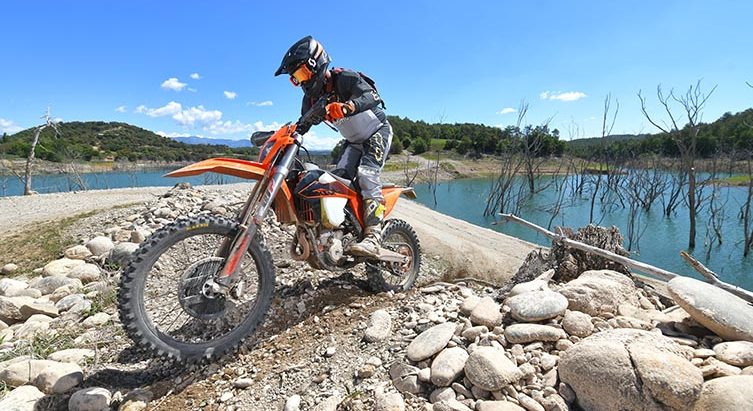
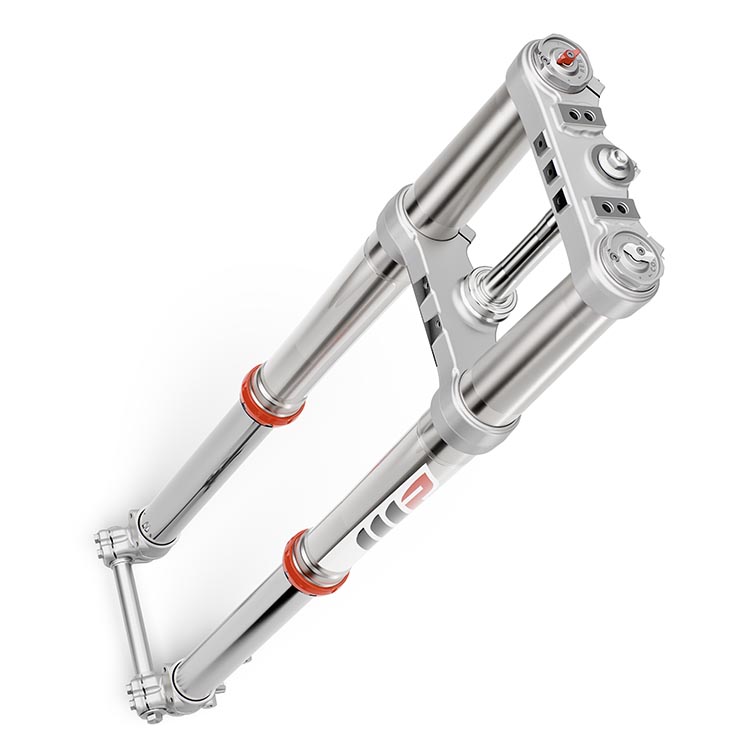
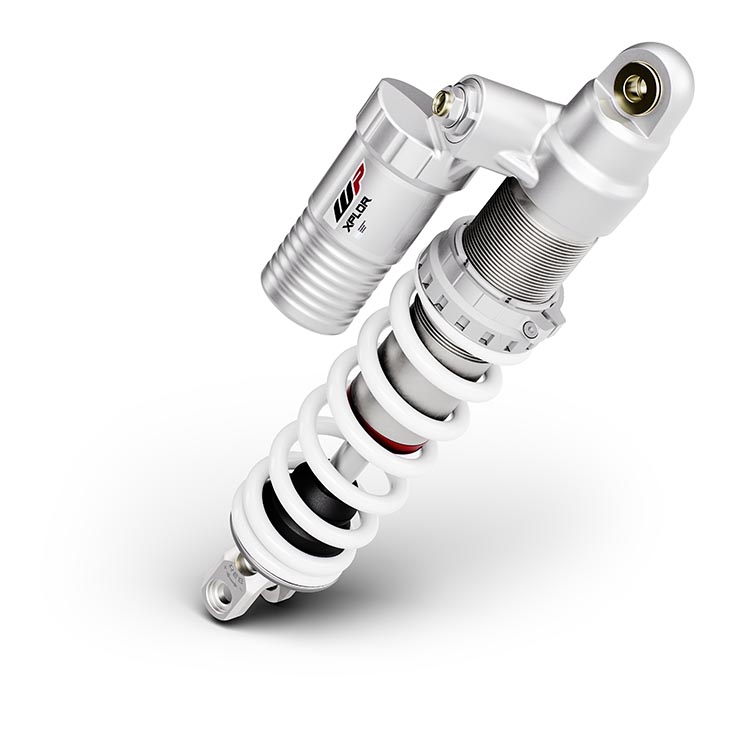


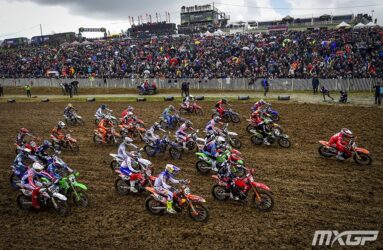





Be the first to comment...